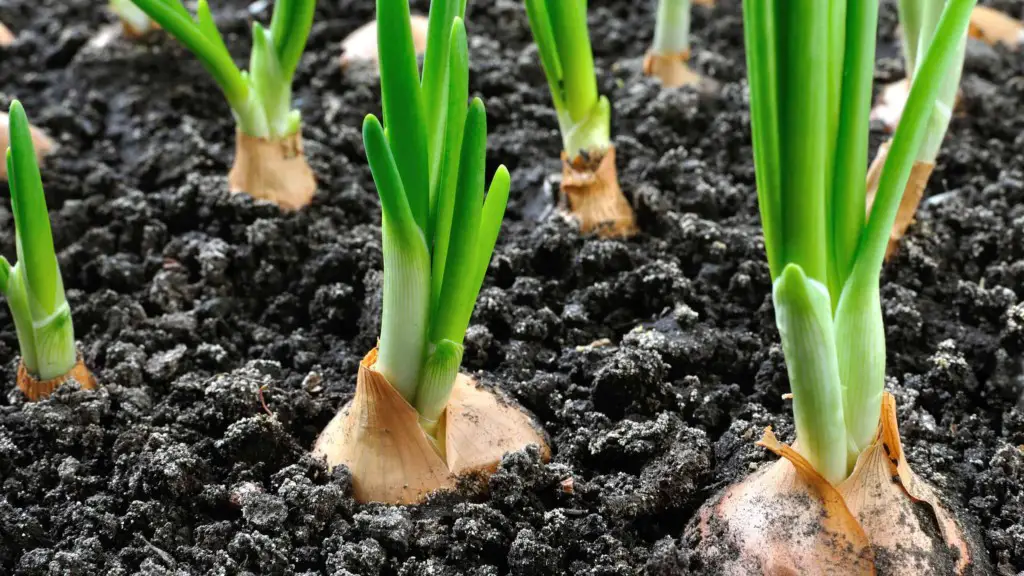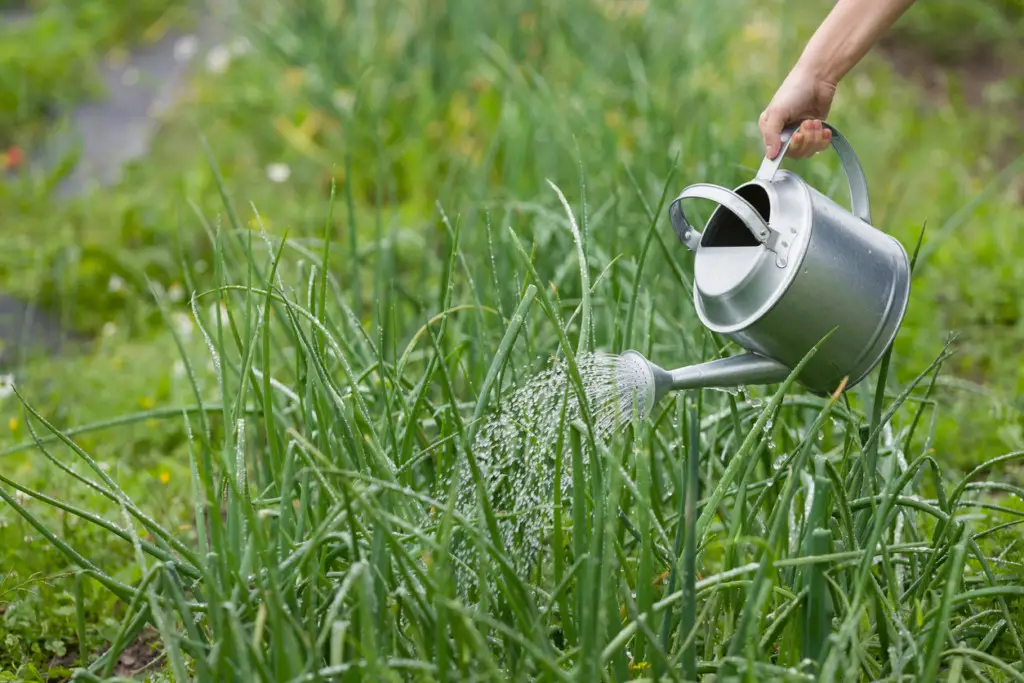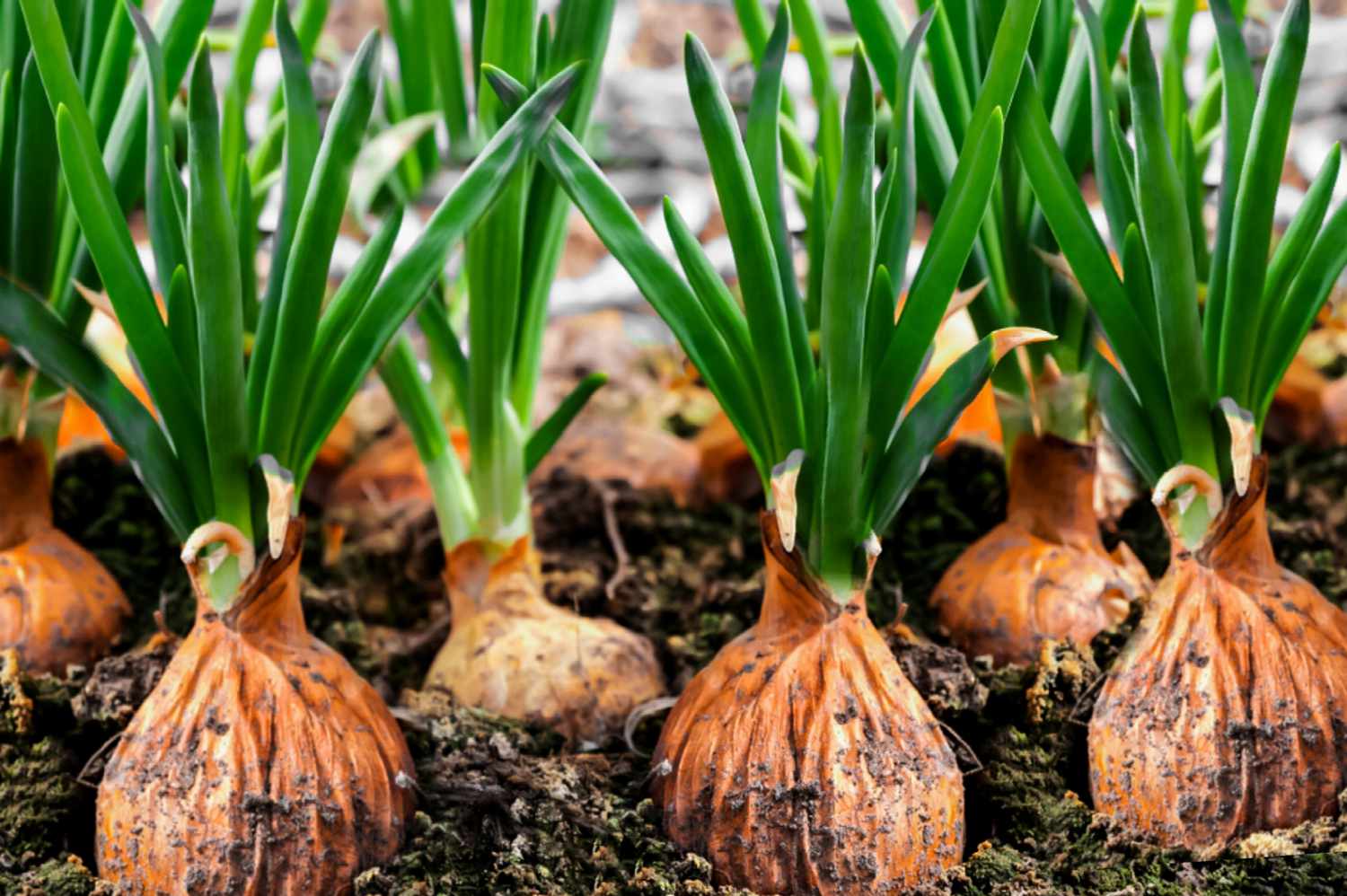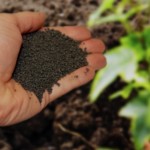If you’re a gardening enthusiast looking to elevate your skills and create a thriving onion harvest, you’ve come to the right place. In this comprehensive guide, we will walk you through the intricate process of how to plant onions like a seasoned pro. Whether you’re a novice or have some gardening experience under your belt, our detailed instructions and expert insights will equip you with the knowledge needed to cultivate onions that are both flavorful and abundant. By the time you finish reading, you’ll be armed with the confidence to create a flourishing onion garden that will not only enrich your culinary creations but also fill your garden with vibrant, aromatic splendor.
Selecting the Right Onion Varieties
The journey to becoming a proficient onion grower begins with the crucial step of selecting the right onion varieties. Just as each individual has their unique preferences, different onion types offer distinct flavors, textures, and uses. Here are a few popular choices and their characteristics:
- Yellow Onions: Renowned for their versatility and robust flavor, yellow onions are a staple in many dishes. They offer a harmonious blend of sweet and tangy notes, making them an excellent base for soups, stews, and sautés.
- Red Onions: With their eye-catching hue and slightly milder taste, red onions are a fantastic addition to salads, salsas, and sandwiches. Their vibrant color can add an appealing visual element to your culinary creations.
- White Onions: Known for their subtle sweetness and crisp texture, white onions are frequently used in Mexican and Mediterranean cuisines. They provide a delicate flavor that complements a variety of dishes.
- Sweet Onions: If you have a penchant for mild, almost sugary flavors, sweet onions are the ideal choice. Their low pungency makes them perfect for enjoying raw in salads or lightly caramelizing them for a delightful topping.

Preparing the Soil for Successful Planting
Before you embark on the planting journey, it’s essential to lay a solid groundwork for your onion bed. The health and vitality of your onions depend on the quality of the soil they’re planted in. Here’s how to ensure your onion patch is primed for optimal growth:
- Select a Sun-Drenched Location: Onions are sun lovers, thriving in full sunlight. When choosing a spot for your onion bed, opt for an area that receives a minimum of 6 to 8 hours of direct sunlight each day.
- Soil Testing and Enrichment: Performing a soil test is akin to understanding your garden’s unique personality. Test the pH level and nutrient content of your soil. Onions tend to prefer slightly acidic to neutral soil, with a pH range of 6.0 to 7.0. If your soil requires adjustment, incorporate organic matter such as compost to enhance its texture, drainage, and fertility.
- Ensuring Adequate Drainage: Onions detest soggy soil, so ensuring proper drainage is imperative. To prevent waterlogging, consider creating raised beds or amending the soil with sand to promote optimal drainage.
Planting Onions: Step-by-Step Guidance
Now that your soil is prepared, it’s time to dive into the exciting process of planting onions. Follow these precise steps to ensure your onion plants get off to the best possible start:
- Timing is Everything: Timing plays a crucial role in onion planting success. Onion sets (small bulbs) can be planted in early spring, while onion seeds can be started indoors approximately 6 to 10 weeks before the last expected frost.
- Planting Depth: Whether you’re planting sets or seeds, the general rule of thumb is to plant them about 1 inch deep into the soil. For sets, ensure that the pointed side is facing upwards to encourage healthy growth.
- Mindful Spacing: Providing adequate space for your onion bulbs to develop is essential. Aim to plant onion sets or thin out seedlings to maintain a spacing of 4 to 6 inches apart in rows that are 12 to 18 inches apart.
- Mulching and Watering: Once your onion sets or seedlings are snug in the soil, apply a layer of mulch over the planting area. Mulch helps to retain soil moisture, regulate temperature, and suppress weed growth. Consistent watering is key – aim for around 1 inch of water per week to keep your onions well-hydrated.

Nurturing Your Growing Onions
As your onion plants progress in their growth journey, they’ll require ongoing care to ensure a successful harvest. Here are the essential care practices to implement:
- Strategic Fertilization: Onions have hearty appetites and benefit from regular feeding. To provide your onion plants with the nutrients they need to thrive, apply a balanced fertilizer every 4 to 6 weeks.
- Weed Management: The battle against weeds is a constant one. Keep your onion bed free of competing weeds to ensure your onions receive the lion’s share of nutrients and water.
- Thinning Out Seedlings: If you began your onion journey from seeds, it’s crucial to thin out the seedlings when they reach a height of about 4 to 6 inches. This process allows the remaining plants ample space to grow and develop robust bulbs.
Harvesting and Storing Your Onions
The culmination of your hard work arrives at the moment of harvest. Here’s how to determine when your onions are ready to be harvested and how to store them for long-lasting enjoyment:
- Foliage Yellowing: As your onions mature, their lush green foliage will gradually transition to a vibrant yellow color and start to bend over.
- Bulb Formation and Size: Gently dig around the base of an onion to assess its bulb size. Harvest when the bulbs have reached your desired size, typically around 2 to 3 inches in diameter.
- Curing Process: After carefully lifting your onions from the soil, lay them in a well-ventilated, dry area for approximately 2 to 3 weeks. This curing period allows the outer layers of the onions to dry and form a protective papery skin, extending their shelf life.
Frequently Asked Questions (FAQ)
Q1: How do I grow onions from an onion?
Growing onions from an existing onion is a fascinating process. To do this, select a healthy onion bulb and cut off the root end, leaving about 1 inch of the onion itself. Plant the onion in well-prepared soil with the cut side facing down, and cover it with a thin layer of soil. Water it regularly and watch as it begins to sprout new shoots and eventually form a new onion bulb.
Q2: How do you grow an onion plant?
Growing an onion plant involves selecting a suitable onion variety, preparing the soil with adequate drainage and nutrients, and planting onion sets or seeds at the right depth and spacing. Regular watering, proper fertilization, and weed management are essential for nurturing your onion plant as it grows. Harvest your onions when the foliage turns yellow and begins to bend over, and then cure and store them for long-lasting use.
Q3: How many onions grow from one bulb?
Under optimal conditions, a single onion bulb can give rise to multiple onion plants. Each planted bulb can potentially yield a cluster of smaller onions, also known as onion sets. The number of onions that grow from one bulb can vary, depending on factors such as the onion variety, spacing, and care provided during growth. On average, you can expect anywhere from 3 to 5 smaller onions to develop from a single bulb.
Q4: How many onions do you need to grow?
The number of onions you should grow depends on your culinary preferences, available space, and intended usage. If you’re aiming for a continuous supply of fresh onions throughout the year, consider planting a substantial number of onion bulbs. A good starting point is to plant at least 30 to 50 onion bulbs per person in your household. This quantity should provide you with a steady harvest for everyday cooking needs and storage.
Q5: Can I plant onions indoors?
Yes, you can successfully grow onions indoors, especially if you have limited outdoor space or want to extend your growing season. To grow onions indoors, choose a compact onion variety suitable for container gardening. Plant the onion sets or seeds in a well-draining potting mix, place the container in a sunny location, and provide adequate water and care. Keep in mind that indoor-grown onions may have slightly different growth patterns compared to those grown outdoors.
Q6: How long does it take to grow onions?
The time it takes to grow onions from planting to harvest can vary based on the onion variety and growing conditions. Generally, onion sets can mature and be ready for harvest in about 90 to 120 days after planting. On the other hand, onions grown from seeds may take a bit longer, usually around 100 to 150 days. Keep in mind that factors such as weather, temperature, and care practices can influence the growth rate.
Q7: Can I regrow onions from kitchen scraps?
While onions can regrow from kitchen scraps, they are more commonly grown from whole onion bulbs or sets for consistent and robust results. Regrowing onions from kitchen scraps involves planting the discarded onion bottom in soil, allowing it to sprout and develop new growth. However, the resulting onions may not reach the same size or quality as those grown from bulbs or sets.
In conclusion, the journey of mastering how to plant onions is a fulfilling and rewarding endeavor. By carefully selecting onion varieties, diligently preparing the soil, and nurturing your onion plants with care, you’re well on your way to enjoying a flourishing onion garden that will enrich your culinary adventures. So, roll up your sleeves, embrace the joy of gardening, and watch as your onion garden flourishes before your eyes. Happy planting!






